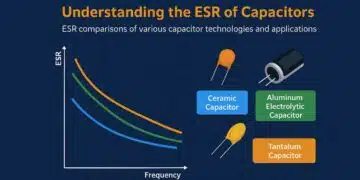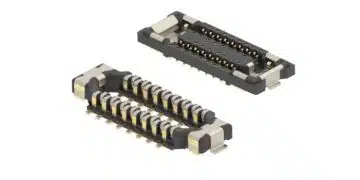prof. Sam Ben-Yaakov in this video explains ceramic capacitors‘ behavior with DC Bias and AC voltage and how to model it in LTSpice.
- Reference to the paper mentioned in the presentation: “DC and AC Bias Dependence of Capacitors Including Temperature Dependence”, Istvan Novak, Kendrick Barry Williams, Jason R. Miller, Gustavo Blando, Nathaniel Shannon. DesignCon East 2011 http://electrical-integrity.com/Paper…
- Please note: The Q(V) plots shown in slides 12-14 include an offset in Q due to an arbitrary initial point of integration. The correct value of Q at V=0 is, of course, Q=0.
This presentation delves into the root causes and effects of DC bias and AC bias in ceramic capacitors, particularly focusing on Class II ferroelectric capacitors such as X7R. It aims to elucidate the behavior of capacitors under different biasing conditions, modeling approaches, and their implications on electronic circuit designs, especially in power electronics.
Introduction
ClassII ceramic capacitors demonstrate varying capacitance behaviors under DC and AC bias conditions. This document explores critical data interpretations from capacitor datasheets, identifies measurement methodologies, and offers precise nomenclature to distinguish between small-signal and large-signal capacitance.
Capacitance Measurement and Classification
- DC Bias Dependence: Capacitors exhibit a decrease in capacitance with increasing DC bias, particularly noted in Class II capacitors.
- AC Bias Characteristics: Changes in capacitance are observed under AC excitation, necessitating distinct measurement approaches for small-signal (derivative capacitance) and large-signal capacitance.
Modeling Nonlinear Capacitors
- Charge-Voltage Relationship: The capacitance is defined by the derivative of charge (Q) concerning voltage (V). Linear capacitors maintain a constant relationship, whereas nonlinear capacitors demonstrate variable capacitance.
- Simulation Techniques: Models can employ total capacitance or derivative capacitance approaches. LTspice and similar simulators are effective for simulating nonlinear behavior using behavioral voltage sources and integrals to measure charge.
Simulation Insights
- Small vs. Large Signal Excitation: Simulations reveal that small AC signals result in minor distortions, while large AC excitations significantly distort current waveforms due to nonlinear effects.
- Realistic Power Electronics Scenarios: Unlike standard tests imposing voltage on capacitors, power electronic circuits inject current. Simulations with resonant circuits demonstrate how nonlinearity affects both current and voltage, dependent on resonance proximity.
Implications for Electronic Design
- PWM Converters: In applications with small voltage ripples, the primary concern is the capacitance variance with DC bias.
- Resonant Converters: Nonlinear capacitors under large current amplitudes experience both capacitance change and waveform distortion, making them less suitable for resonant converters like LLC circuits.
Conclusion
Understanding the nonlinear behavior of ceramic capacitors under different bias conditions is critical for accurate electronic design. Designers should consider these characteristics in simulation models to predict and mitigate performance issues in real-world applications.
Further read reference:
High CV MLCC DC BIAS and AGEING Capacitance Loss Explained




























